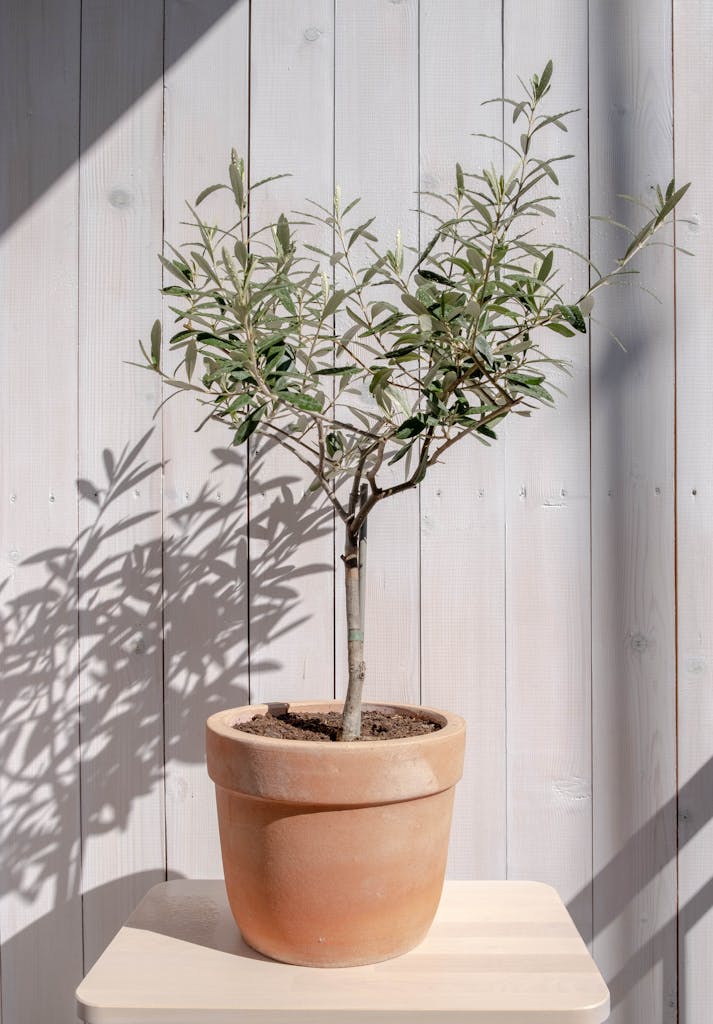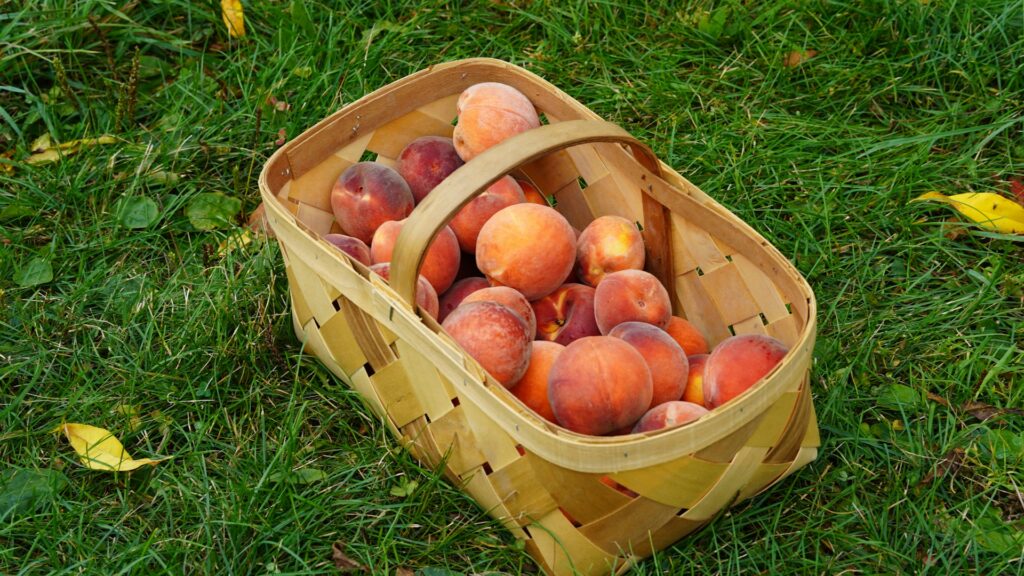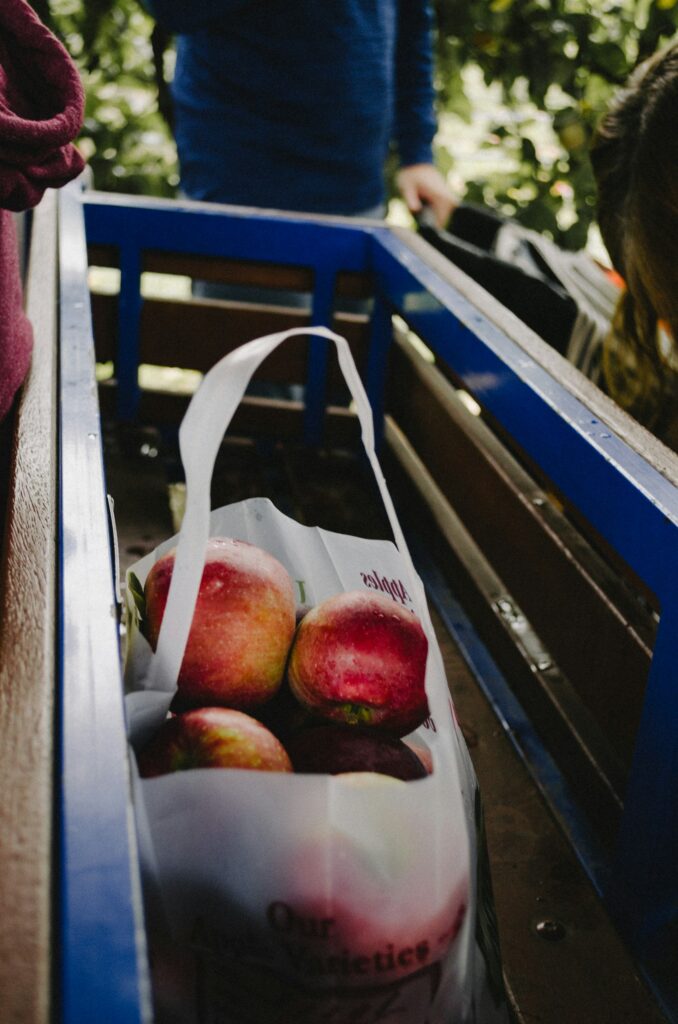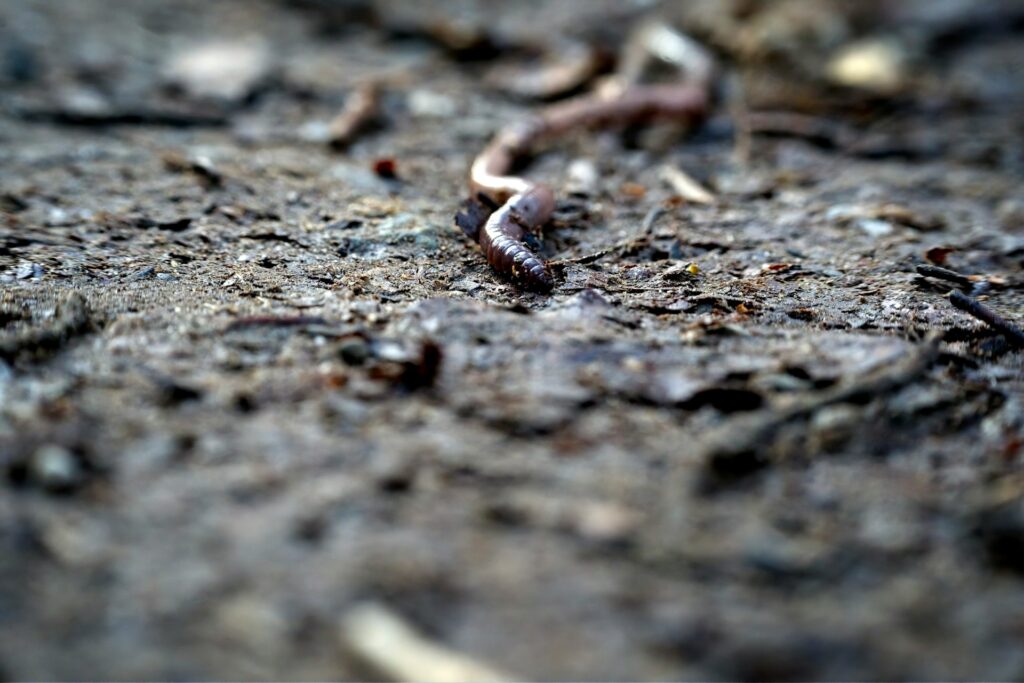
Olive trees are a true delight, with their silvery-green foliage and the promise of delectable olives. While these Mediterranean beauties are often thought of as large, sprawling trees, they can actually thrive remarkably well in pots, making them an excellent choice for small gardens, patios, or even indoor olive trees. In this comprehensive guide, we’ll unlock the secrets to growing healthy, productive olive trees in pots, no matter your climate or available space.
Understanding the Unique Needs of Potted Olive Trees
Olive trees are native to the Mediterranean region and thrive in warm, sunny, and well-draining conditions. While they can tolerate a range of climates, it’s essential to understand the specific needs of olive trees when growing them in containers. Factors like soil, water, and sunlight requirements must be carefully considered to ensure the health and productivity of your potted olive tree.
Olive trees are well-suited for container cultivation because they naturally have a more compact growth habit compared to their full-size counterparts grown in the garden. In pots, olive trees can be pruned and shaped to maintain a manageable size, making them ideal for urban gardens, balconies, and even indoor olive trees. However, it’s crucial to provide these Mediterranean plants with the right conditions to thrive in their confined space.
The soil is a critical factor when it comes to growing olive trees in pots. Olive trees prefer a well-draining, nutrient-rich potting mix that is slightly acidic, with a pH between 6.0 and 7.5. The soil should provide ample drainage to prevent waterlogging, as olive trees are susceptible to root rot. Incorporating organic matter, such as compost or well-rotted manure, can improve soil structure and nutrient content, giving your potted olive tree the nourishment it needs.
Watering is another crucial aspect of caring for a potted olive tree. These plants have relatively shallow root systems and can be prone to both over-watering and under-watering. The key is to maintain consistent moisture, allowing the soil to partially dry out between waterings. During the growing season, you may need to water your potted olive tree more frequently, especially in hot, dry conditions. Conversely, during the winter months, the watering needs will decrease as the tree goes into a more dormant state.
Sunlight is also essential for the health and productivity of your potted olive tree. Olive trees thrive in full sun, requiring a minimum of six hours of direct sunlight per day. If your growing space is limited to a shaded area, consider moving the pot to a sunnier location during the warmer months to ensure your tree receives the light it needs. Proper sun exposure will not only support the growth of the tree but also encourage the formation of olives.
By understanding the specific needs of potted olive trees, you can create the ideal growing conditions for these Mediterranean wonders, setting them up for long-term success and abundant harvests.
Choosing the Ideal Olive Variety for Container Growing
Not all olive varieties are equally suited for pot cultivation. Some cultivars, such as the Arbequina and Koroneiki, are more compact and better adapted to container growing. When selecting an olive tree, consider the mature size, growth habit, and cold hardiness of the variety to ensure it fits your available space and climate.
Arbequina is a popular choice for growing olive trees in pots, as it is a relatively small cultivar that typically reaches a mature height of 10-15 feet (3-4.5 meters) when grown in the ground. In a container, the Arbequina can be easily maintained at a more manageable size through regular pruning. This variety is also known for its high fruit production and cold tolerance, making it a versatile option for indoor and outdoor olive trees.
Another well-suited olive variety for pots is the Koroneiki. Originating from Greece, the Koroneiki is a compact, bushy tree that rarely exceeds 15 feet (4.5 meters) in height, even when grown in the ground. Its smaller size and dense foliage make it an excellent choice for container cultivation. Koroneiki olive trees are also known for their high oil content and robust flavor, making them a favorite among culinary enthusiasts.
When choosing an olive variety for your potted tree, consider not only the mature size but also the tree’s specific climate requirements. Some olive cultivars, such as the Manzanilla and Picual, are better suited for warmer, Mediterranean-like climates and may struggle in colder regions. Carefully research the hardiness and growing needs of different olive varieties to ensure you select the one that will thrive in your local conditions.
Keep in mind that the size of the container will also play a role in determining the mature size of your olive tree. Larger pots can accommodate more vigorous-growing varieties, while smaller containers may be better suited for more compact cultivars. By selecting the right olive variety and pairing it with an appropriate pot size, you can create a thriving potted olive tree that will add beauty and productivity to your growing space.
Selecting the Perfect Pot for Your Olive Tree
The size and material of the pot you choose can greatly impact the growth and development of your olive tree. Opt for a large, well-draining container with ample room for the roots to spread. Terracotta or ceramic pots are excellent choices, as they allow the soil to breathe and promote proper drainage.
When it comes to pot size, it’s important to choose a container that is large enough to accommodate the mature size of your olive tree. As a general rule, the pot should be at least 18 inches (45 cm) in diameter and 18 inches (45 cm) deep. This will provide sufficient space for the root system to develop and prevent the tree from becoming rootbound.
Terracotta pots are a popular option for growing olive trees in containers, as they are porous and allow the soil to breathe. This helps prevent waterlogging and promotes healthy root development. Terracotta also has a natural aesthetic that complements the silvery-green foliage of the olive tree.
Ceramic pots are another excellent choice for potted olive trees. These containers are sturdy, long-lasting, and come in a variety of stylish designs to suit any décor. Like terracotta, ceramic pots also allow for good air circulation and drainage, making them well-suited for olive tree cultivation.
When selecting a pot, ensure it has adequate drainage holes at the bottom to allow excess water to escape. Poorly drained soil can lead to root rot, which can be detrimental to the health of your olive tree. To further improve drainage, you can place a layer of gravel or small stones at the bottom of the pot before adding the potting mix.
Consider the overall weight of the container when choosing a pot for your olive tree. Fully-grown olive trees can be quite heavy, so you may need to select a pot that is made of a sturdy material, such as terracotta or ceramic, to support the weight of the tree and soil. Alternatively, you can opt for a lightweight, resin-based container that still provides the necessary drainage and support.
By selecting the right-sized, well-draining pot for your olive tree, you’ll be setting the stage for a healthy, thriving plant that can produce an abundance of delicious olives for years to come.
Planting and Potting Your Olive Tree
When planting your olive tree in its new container, be sure to use a high-quality, well-draining potting mix. Incorporate organic matter, such as compost, to improve soil structure and nutrient content. Carefully position the tree in the pot, ensuring the root ball is at the correct depth and the soil is firmly packed around the roots.
Preparing the potting mix is a crucial first step in planting your olive tree. Choose a high-quality, well-draining potting soil that is formulated for use with fruit trees or vegetables. Avoid using regular garden soil, as it may not provide the necessary drainage and structure for a potted olive tree.
To further enhance the soil, mix in a generous amount of compost or well-rotted organic matter. This will not only improve the nutrient content of the potting mix but also help to create a light, aerated texture that is ideal for olive tree roots. Aim for a ratio of around 20-30% compost or organic matter to 70-80% potting mix.
When placing your olive tree in the pot, be sure to position the root ball at the correct depth. The top of the root ball should be level with the soil line, ensuring the tree is planted at the same depth as it was growing in its previous container or in the ground. Gently backfill the pot with the prepared potting mix, taking care to pack it firmly around the roots to eliminate any air pockets.
It’s important to note that olive trees have relatively shallow root systems, so they don’t require a deeply planted root ball. In fact, planting the tree too deeply can lead to issues such as root rot or stem decay. By positioning the root ball at the proper depth, you’ll be setting your olive tree up for optimal growth and development.
After planting, water the soil thoroughly to help settle the potting mix and ensure good soil-to-root contact. Avoid compacting the soil too tightly, as this can inhibit oxygen flow and hinder root growth.
With the right potting mix, planting depth, and watering techniques, you’ll have your olive tree well on its way to thriving in its new container home.
Caring for Your Potted Olive Tree
Proper care is essential for the long-term health and productivity of your potted olive tree. This includes regular watering, fertilizing, and monitoring for pests or diseases. Understand the unique watering needs of your olive tree, as well as the best way to provide it with the sunlight it craves.
Watering is a crucial aspect of caring for a potted olive tree. These plants have relatively shallow root systems and can be prone to both over-watering and under-watering. The key is to maintain consistent moisture, allowing the soil to partially dry out between waterings.
During the growing season, when the tree is actively producing new growth and fruit, you may need to water your potted olive tree more frequently, especially in hot, dry conditions. Aim to keep the soil consistently moist but not waterlogged. Insert your finger into the soil to check the moisture level, and water when the top inch or two of soil feels dry to the touch.
In the winter months, when the tree is in a more dormant state, the watering needs will decrease. Allow the soil to dry out a bit more between waterings, but don’t let it become completely dried out. Overwatering during the dormant season can lead to root rot and other issues.
Fertilizing your potted olive tree is also important for its long-term health and productivity. Olive trees are heavy feeders and will benefit from regular applications of a balanced, slow-release fertilizer. Look for a formula specifically designed for fruit trees or citrus plants, and apply it according to the manufacturer’s instructions.
In addition to watering and fertilizing, ensuring your potted olive tree receives adequate sunlight is crucial. Olive trees thrive in full sun, requiring a minimum of six hours of direct sunlight per day. If your growing space is limited to a shaded area, consider moving the pot to a sunnier location during the warmer months to ensure your tree receives the light it needs.
By diligently caring for your potted olive tree, providing it with the right amount of water, nutrients, and sunlight, you’ll be rewarded with a healthy, productive plant that will grace your garden or patio with its stunning foliage and delectable olives.
Pruning Shaping, And Repotting Olive Trees
Regular pruning is crucial for maintaining the shape and productivity of your potted olive tree. Learn the best techniques for pruning your tree, whether you’re aiming for a more compact, bushy form or a taller, more traditional shape.
Pruning an olive tree in a pot serves several important purposes. First, it helps to control the size and shape of the tree, ensuring it remains manageable and well-proportioned for its container. Olive trees can naturally grow quite large, so regular pruning is necessary to keep them from becoming overgrown and unruly in a pot.
Secondly, pruning encourages the formation of new, productive growth. By removing older, less-productive branches and shaping the tree, you can stimulate the development of fresh, fruit-bearing shoots. This helps to maintain a consistent and abundant olive harvest year after year.
Lastly, proper pruning techniques can help to improve the overall health and vigor of your potted olive tree. Removing dead, damaged, or diseased wood allows the tree to focus its energy on healthy growth, reducing the risk of pest infestations or disease.
When it comes to pruning your potted olive tree, the best time to do so is typically in late winter or early spring, just before the tree begins its active growing season. This allows the tree to heal any pruning wounds and redirect its energy into new growth.
Start by removing any dead, damaged, or crossing branches. Cut these back to the main stem or a lateral branch, making clean, angled cuts just above an outward-facing bud or branch. This will encourage the tree to grow in a more open, well-structured manner.
Next, consider the overall shape you want to achieve. Olive trees can be trained into a variety of forms, from a more compact, bushy shape to a taller, more traditional tree-like silhouette. Prune strategically to maintain the desired shape, removing any wayward or overly vigorous branches.
Remember to always use clean, sharp pruning tools and make cuts at a slight angle, just above an outward-facing bud or branch. This will help the tree heal quickly and prevent the formation of unsightly stubs.
By incorporating regular pruning into your potted olive tree’s care routine, you’ll be able to keep it healthy, productive, and visually appealing for years to come.
Overwintering Your Potted Olive Tree
Depending on your climate, you may need to take special measures to protect your olive tree during the winter months. Understand the cold tolerance of your variety and explore options for overwintering your potted olive, such as moving it indoors or providing insulation and wind protection.
Olive trees are generally quite cold-hardy, with many varieties able to tolerate temperatures down to around 20°F (-6°C) for short periods. However, when grown in containers, potted olive trees can be more susceptible to cold damage, as their root systems are confined and less insulated.
If you live in a region with harsh winters, it’s essential to take steps to protect your potted olive tree during the colder months. One of the most effective strategies is to move the tree indoors, such as into a greenhouse, sunroom, or even a well-lit garage or shed.
When bringing your potted olive tree indoors, be sure to gradually acclimate it to the new environment. Start by moving it to a sheltered, partially shaded spot a few weeks before the first expected frost. This will help the tree adjust to the reduced light levels and prevent sudden stresses.
Once indoors, place your olive tree in the sunniest spot possible, ensuring it receives at least four to six hours of direct sunlight each day. Supplement with artificial grow lights if necessary. Maintain consistent soil moisture, allowing the top inch or two of soil to dry out between waterings.
If moving your potted olive tree indoors is not an option, you can still provide protection from the elements by insulating the container. Wrap the pot in burlap, straw, or other insulating materials to help retain heat and shield the roots from freezing temperatures. You can also group multiple potted olive trees together, as the collective mass can help to moderate temperature fluctuations.
In regions with mild winters, you may be able to leave your potted olive tree outdoors with minimal additional protection. However, it’s still a good idea to provide some form of insulation, such as placing the pot on raised feet or wrapping the base with a layer of mulch or straw.
Regardless of your climate, it’s crucial to monitor your potted olive tree closely throughout the winter months and be prepared to take action if cold stress becomes a concern. With the right overwintering strategies in place, you can help ensure your olive tree remains healthy and ready to thrive in the spring.
Troubleshooting Common Issues with Potted Olive Trees
Like any plant, olive trees can face various challenges, from pests and diseases to nutrient deficiencies. Be prepared to identify and address common problems that may arise, ensuring your potted olive tree remains healthy and thriving.
One of the most common issues with potted olive trees is leaf yellowing or chlorosis. This can be caused by a variety of factors, including nutrient deficiencies, poor soil quality, or even root damage. If you notice your olive tree’s leaves turning yellow, start by checking the soil pH and adjusting it if necessary to maintain the slightly acidic conditions that olive trees prefer.
Another potential problem is leaf drop or defoliation. This can be a natural response to changes in the tree’s environment, such as moving it to a new location or experiencing temperature fluctuations. However, excessive leaf drop may also indicate issues like over-watering, pests, or disease. Carefully monitor your tree’s watering schedule and inspect the foliage for any signs of insects or disease.
Pests can also be a concern for potted olive trees. Common culprits include scale insects, aphids, and spider mites, which can feed on the leaves and stems, causing damage and stunting growth. Regularly inspect your tree and take prompt action if you notice any pest infestations, using organic or natural pest control methods as needed.
Diseases, such as olive knot, anthracnose, and root rot, can also affect potted olive trees. These issues are often exacerbated by poor drainage, over-watering, or physical damage to the tree. Ensure your potting mix is well-draining, and be vigilant in monitoring your tree’s health to catch any issues early.




